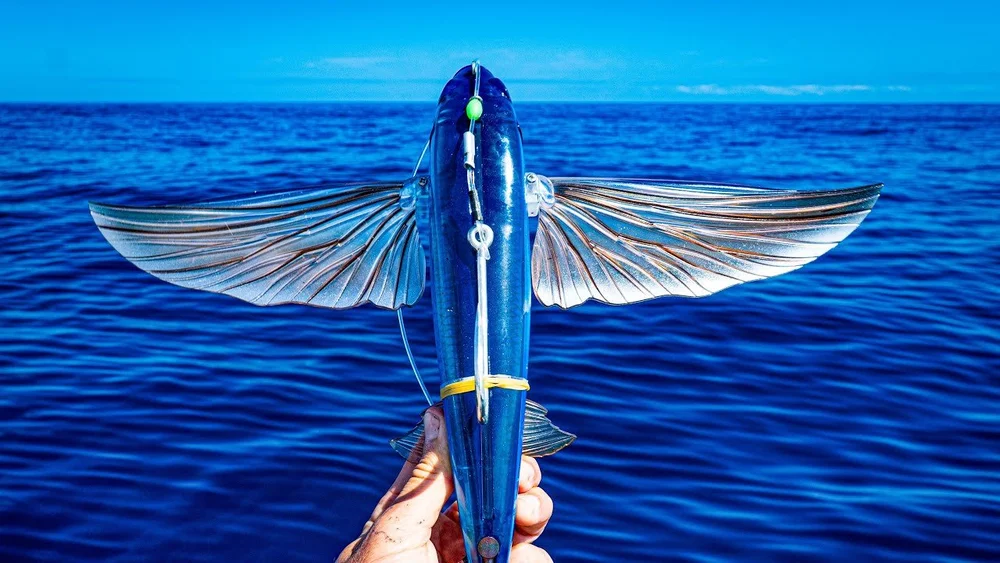Flying Fish: Nature’s Aerial Mariners
Flying fish are captivating creatures that have evolved a remarkable ability to glide through the air, transcending the boundaries between sea and sky. These extraordinary fish belong to the Exocoetidae family and can be found in various oceans worldwide, from the tropical waters of the Atlantic, Pacific, and Indian Oceans to the warmer seas of the Mediterranean and Caribbean.
Flying fish possess distinctive physical features that enable their airborne capabilities. Typically small to medium-sized, they have streamlined bodies, narrow caudal (tail) fins, and pectoral fins that resemble wings. These enlarged pectoral fins act as natural gliders when they launch themselves from the water’s surface, allowing them to remain airborne for surprisingly long distances.
Their ability to “fly” is not accomplished through flapping their fins like birds or bats. Instead, flying fish utilize the speed they gather underwater to break the surface and launch themselves into the air. Once airborne, they spread their pectoral fins to utilize aerodynamics and generate lift, sustaining their flight.
Flying fish predominantly take to the air to escape predators, such as larger fish or marine mammals. When threatened, they can reach impressive speeds of up to 37 miles per hour (60 kilometers per hour) in the water. As they burst out of the water, their tails act as a propeller, propelling them upwards, and their pectoral fins serve as wings, sustaining their flight as they glide.
The duration of their flights varies depending on the species and individual fish, but some flying fish have been recorded to stay airborne for several seconds to a minute, covering distances of up to 655 feet (200 meters). This extraordinary flight mechanism not only helps them avoid predators but also aids in finding food and expanding their range.
There are approximately 64 recognized species of flying fish, exhibiting various colors and patterns. Some species, like the Japanese flying fish, have vibrant hues of blue and yellow, enhancing their visual appeal. Others have more subdued coloration, which helps them blend into their surroundings and evade predators.
Flying fish play a crucial role in marine ecosystems. As both predator and prey, they contribute to the delicate balance of the food chain. They consume plankton and small marine organisms while serving as a source of sustenance for larger fish, seabirds, and marine mammals.
Moreover, when flying fish take to the air, they may inadvertently transport small marine organisms across vast distances, aiding in the dispersal of species and maintaining biodiversity in different regions.
While flying fish are not currently considered endangered, they face threats similar to other marine species. Human activities, such as overfishing and pollution, pose significant risks to their populations. Additionally, climate change and alterations in ocean currents could impact their habitats and migration patterns, affecting their reproductive success and overall survival.
Flying fish are captivating creatures that showcase the marvels of adaptation and evolution. Their unique ability to glide through the air has astonished humans for centuries and continues to inspire researchers and marine enthusiasts alike. As guardians of our oceans, we must strive to protect these remarkable beings and preserve their habitats to ensure their survival and maintain the ecological balance of our marine ecosystems.
Hits: 4







